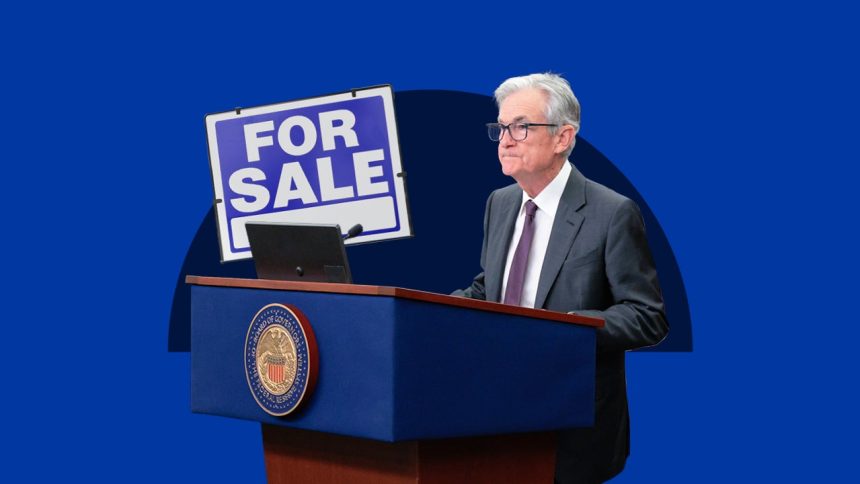By most objective measures, the U.S. housing market is in a rut.
After peaking at 6.1 million existing-home sales in 2021, according to the National Association of Realtors (NAR), transaction volume dipped to just over 4 million by 2024. And 2025 sales are on pace to stay right around that mark.
In fact, home sales are at their lowest level since 1995, despite Census data showing 46 million Americans between the ages of 30 and 39 — prime years for household formation and homebuying — and the country’s population being about 80 million people higher than it was then. One major reason: Young adults simply aren’t buying homes like they used to. John Burns Research reports that only 33 percent of 30-year-olds in the U.S. own a home today, down from 47 percent in 1984.
The affordability problem
These lackluster home-sales numbers are almost certainly due to the unaffordability of homes on the market. NAR’s July existing-home-sales data shows an incredible 25 straight months of year-over-year price increases, with the highest July median price it has ever recorded: $422,400.
The Atlanta Federal Reserve’s Home Ownership Affordability Monitor also paints a gloomy picture for prospective homebuyers. Today’s median-priced home requires 48 percent of today’s median household income. The country’s median principal-and-interest mortgage payment has soared from $1,043 in June 2020 to $2,361 in June 2025. Coupled with property taxes, homeowner’s insurance and private mortgage insurance, total monthly payments doubled from $1,564 to $3,162, far outpacing wage growth during that five-year period.
Is the Fed to blame?
Is the Federal Reserve Bank responsible for all this? According to Doug Duncan, the former chief economist of Fannie Mae and founder of Duncanomics, the Fed definitely played a role in how we got to where we are today.
“That role is having driven real interest rates negative and nominal interest rates essentially to zero, which brought mortgage rates down to the 3 percent range for a sustained time period,” Duncan says. “There was no rational reason why rates should have been that low, that long, or even that low to begin with. But the fact that rates were that low [for] that long moved a whole bunch of people forward in time with a once-in-a-lifetime opportunity to lock in an unreasonably low interest rate. Of course, that stimulated demand, which accelerated the pace of price appreciation.”
The fact that rates were that low moved a whole bunch of people forward in time with a once-in-a-lifetime opportunity to lock in an unreasonably low interest rate.
— Doug Duncan
former chief economist, Fannie Mae
The Fed, you’ll recall, cut the federal funds rate to zero in 2020 to ensure that the economy didn’t collapse due to the burgeoning COVID-19 pandemic. It also employed a tactic called “quantitative easing,” which essentially consisted of the Fed buying trillions of dollars of mortgage-backed securities in order to ensure that the mortgage market had adequate liquidity.
That, according to Beacon Economics founder Chris Thornberg, is what set the housing market on fire. “In the next year-and-a-half, you saw one of the most insane explosions of prices this nation has ever seen, he says, pointing out that, even in the run-up to the Great Recession, home prices didn’t rise that fast. “Between mid-2020 and the end of 2021, prices increased over 50 percent at the national level — and yes, you can dump that all on the Federal Reserve, with the preposterous amount of money that they slammed into the economy.”
Yes, you can dump that all on the Federal Reserve, with the preposterous amount of money that they slammed into the economy.
— Chris Thornberg
founder, Beacon Economics
What happened next was unprecedented, and exacerbated the affordability issues that were already creeping into the housing market. As Thornberg puts it: “The dam collapsed, craziness happened, 2022 hits, inflation surges, the Fed has to step on the brakes, mortgage rates go from 2.5 percent to 7 percent. And housing, which had just gone up over 50 percent in value, suddenly looks very expensive again.”
Both Thornberg and Duncan note that affordability’s root cause is actually limited housing availability — builders have underbuilt relative to population growth, household formation and the obsolescence of existing housing stock for the past 15 years. And current homeowners aren’t anxious to list their homes for sale if it means trading a 2.5 percent mortgage rate for 7 percent. But Fed actions have made a challenging situation much worse.
Will Fed cuts save the housing market? Probably not
President Donald Trump is calling for a cut to the federal funds rate in order to drive mortgage rates lower. While this makes for good sound bites, the reality is quite a bit more nuanced.
There is no direct correlation between the federal funds rate and mortgage rates — they don’t move in lockstep with each other. In fact, the last time the Fed cut rates, interest rates on mortgages went up a point over the next month.
Keep in mind:
The last time the Fed cut rates, mortgage rates actually went up, not down.
Mortgage rates are tied more closely to yields on 10-year U.S. Treasuries: There’s historically a spread of about 1.5 to 2.0 points between those yields and mortgage rates. Duncan notes that if the Fed cuts rates too deeply, too quickly, it could actually create havoc in the bond markets, resulting in higher yields and higher mortgage rates. Duncan calls himself a “skeptic about whether or not you can help the mortgage market through the Fed cutting rates.”
What else might the Fed try, then?
“If you want the market to be more liquid, the only way you’re going to do it is more quantitative easing,” Thornberg says. “Throw a couple trillion dollars at the market of brand new money. And even though it shouldn’t, it will indeed bring down 10-year bond yields and the 30-year fixed rate mortgage in the short run, and that will give you a little boost. But inevitably, that only comes with the cost of inflation.”
Bottom line
So if the Federal Reserve can’t rescue the housing market, what can? What will it take for the market to reset itself to a place where these higher prices and higher mortgage rates aren’t an impediment?
Duncan thinks the answer is patience. “There will be a gradual increase in household incomes. There will be rate declines, but they’re not going to be dramatic. Builders will continue to build and some of [the reset] will occur because of life events — job changes, or their kids finally moving out of the basement. But that will take time.”
Why we ask for feedback
Your feedback helps us improve our content and services. It takes less than a minute to
complete.
Your responses are anonymous and will only be used for improving our website.
Help us improve our content
Read the full article here
















